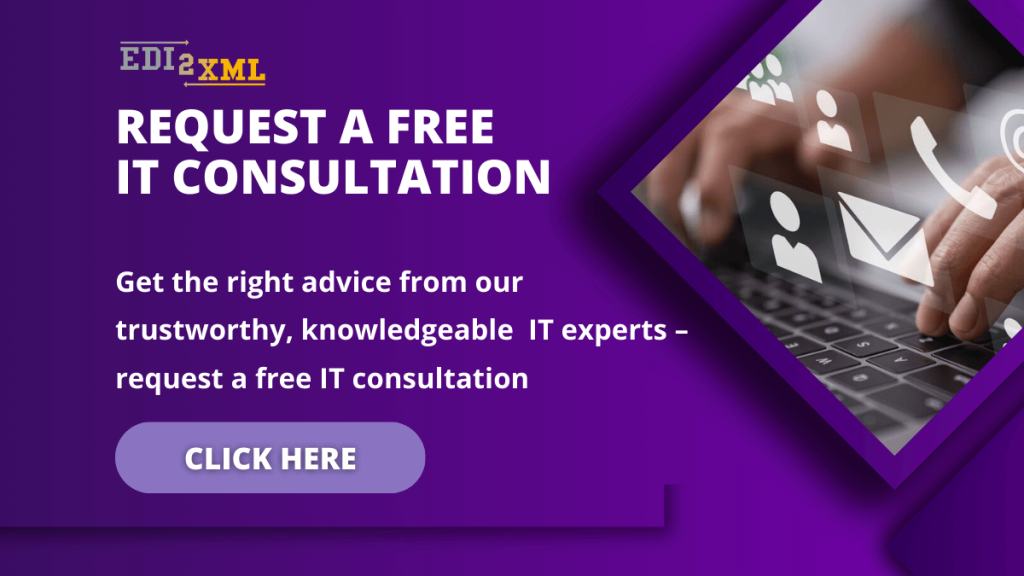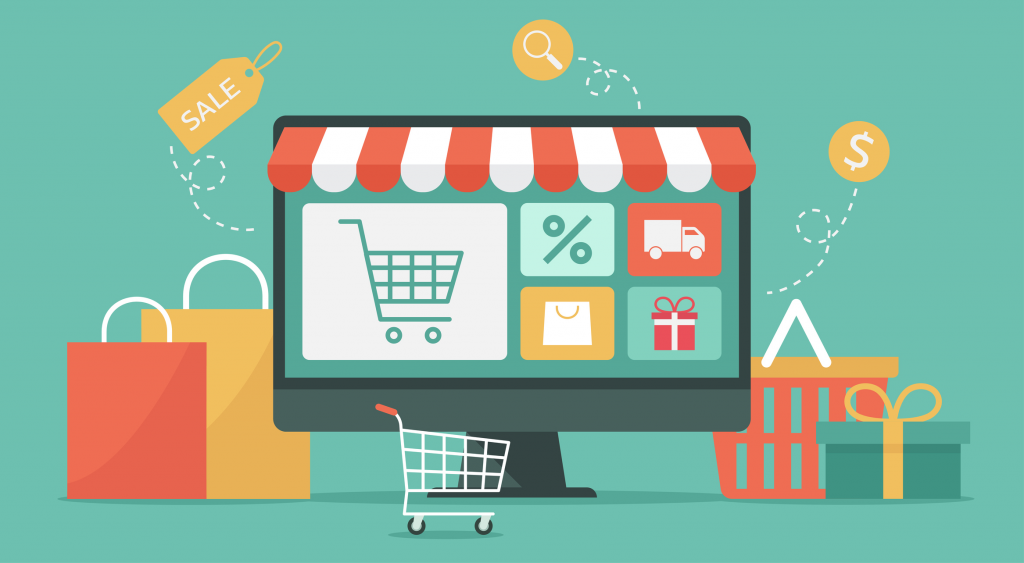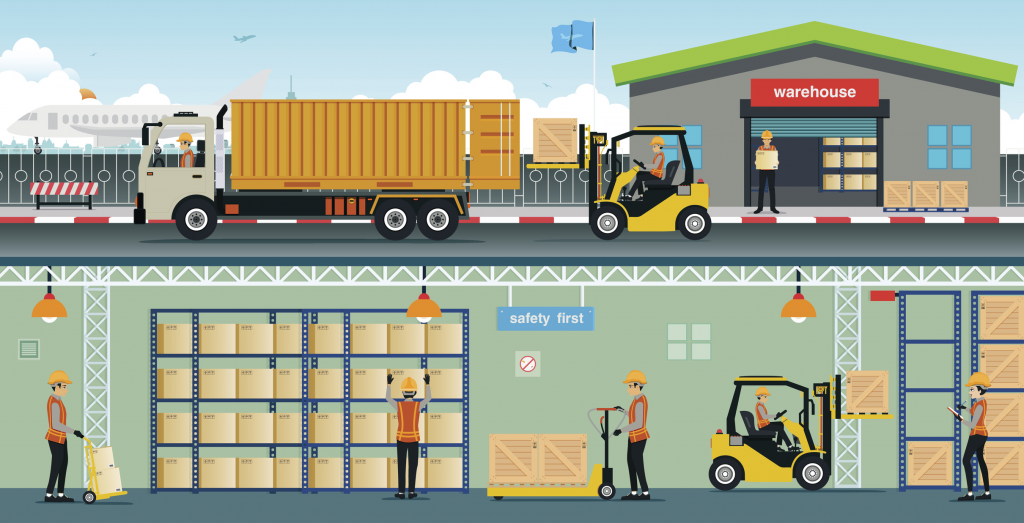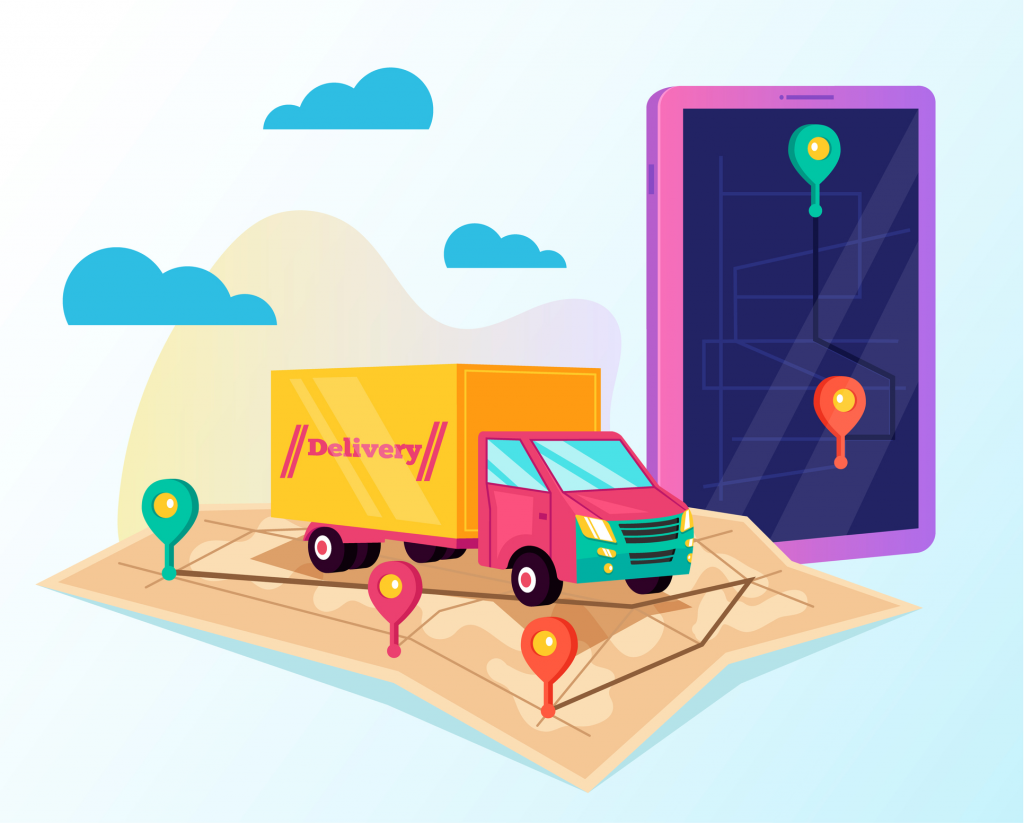With over twenty years of experience in e-commerce integration, we at EDI2XML, have observed a significant change in consumer expectations. Amazon Prime has set new standards for speed and accuracy, making slow or inaccurate delivery not just an inconvenience, but a direct way of losing customers.
This challenge is especially particularly for those who run an online business outside the Amazon ecosystem and are forced to compete with its standards.
That is why many companies come to us for help in optimizing their online business processes and offering online order fulfillment that is not inferior to Amazon Prime.
Intro: Automate E-Commerce Fulfillment
At EDI2XML we understand how important each client is for online business, both for startups that want to attract new clients, and for established companies that need to live up to their brand. That’s why we help businesses automate their fulfillment. As a great example of successful fulfillment automation, is Supplies Outlet. After we implemented a fully managed EDI integration, manual data entry was almost completely eliminated. As a result, about 90% of order processing is now automated. This means that their e-commerce platform creates and transmits orders via EDI, which almost completely eliminates manual work and makes operations much more efficient.
You can read more about the Supplies Outlet Case Study in this article: Streamlining EDI and NetSuite Integration: A Comprehensive Case Study on Supplies Outlet
What is E-Commerce Fulfillment
In essence, this is the entire process that begins when a customer places an order in your online store and ends when that order is in their hands. That is, it is a full cycle: from receiving an order to delivering the goods to the customer.
Key Components of E-Commerce Fulfillment
Let’s look at the key points of what the fulfillment process consists of:
Inventory management:
This, in simple terms, is ensuring that the goods are always in stock. You need to constantly monitor how many goods you have left so that customers can order them.
Order management:
This is when you receive an order, check that everything is in order, collect the necessary goods from the warehouse and prepare them for shipment.
Warehousing and storage:
This is, in essence, the place where your goods are stored. This can be your own warehouse or the warehouse of a special company that deals with fulfillment. The main thing is that the goods are stored in the right place and are ready for shipment.
Packaging and shipping:
This is when you carefully pack the goods so that they are not damaged during delivery, and choose the best way to send them to the customer. Here it is important to consider the cost of delivery, speed and customer preferences.
Returns and reverse logistics:
This is when a customer returns an item. You need to be able to process this return quickly and correctly so as not to lose money and not ruin the relationship with the customer.
Types of Fulfillment Models
Now, let’s talk about what types of fulfillment models there are:
In-house fulfillment:
This is when your company itself handles all fulfillment processes. That is, you have your own warehouse, your own employees who collect and ship orders.
Third-party logistics (3PL):
This is when you outsource all fulfillment processes to a special company – (3PL) provider. For example, companies like ShipBob, Shopify Fulfillment Network. They take care of all the storage, packaging and shipping of your goods.
Dropshipping:
This is when you do not store the goods in a warehouse at all. Instead, when a customer places an order, you pass it on to the supplier or manufacturer, and they ship the goods directly to the customer.
In general, fulfillment is an important part of e-commerce that helps make the buying process quick and convenient for the customer. And the success of your business depends on how well you set up this process.
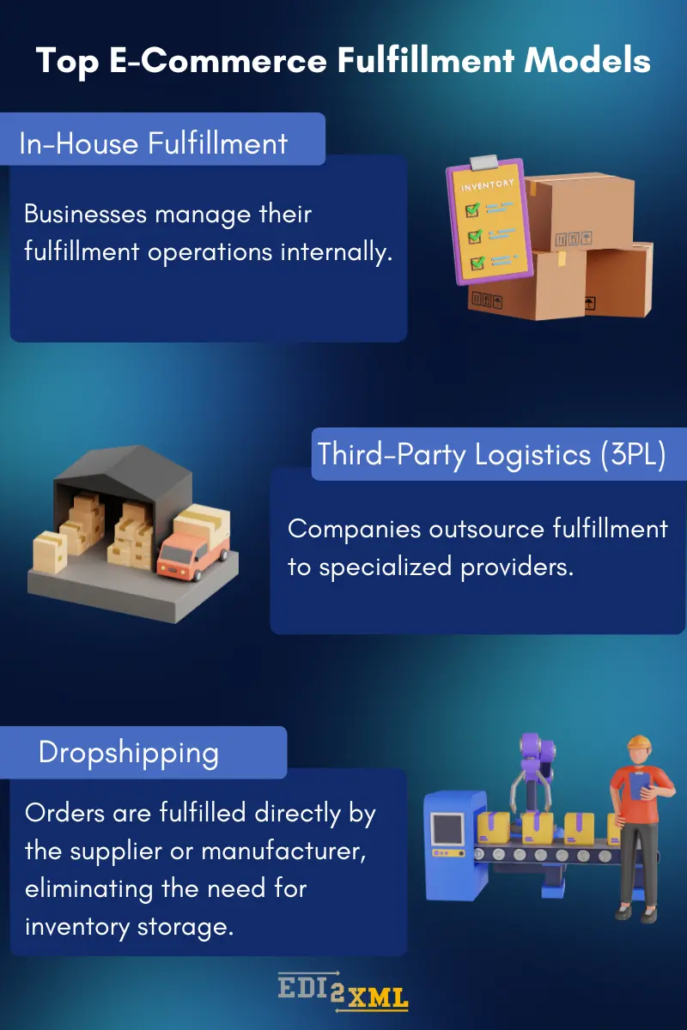
EDI in E-Commerce Fulfilment
EDI (Electronic Data Interchange) is a technology that is widely used in business, including e-commerce. EDI provides automated exchange of business documents in a standardized electronic format between partner companies.
Key Aspects of EDI in Business:
Data standardization: EDI uses generally recognized standards (for example, ANSI X12 – mainly in North America, and EDIFACT in Europe and for international transactions) Standardization of electronic documents allows different systems to interact without the need for manual data processing.
Automation of business processes: EDI automates the exchange of documents such as purchase orders (EDI 850), invoices (EDI 810), advanced shipping notifications (EDI 856) and many others, you can see the full list of transactions here: Complete List of EDI Transaction Sets & Codes for ANSI ASC X12 Standard and Complete List of EDIFACT Messages
Integration with business systems: EDI can be integrated with the company’s business systems like ERP, CRM, accounting systems or application, e-commerce platform (Amazon, Shopify, Adobe Commerce, etc.) This allows you to automatically update data in real time in all systems. Thus with EDI you can improve inventory management, reduces order fulfillment time and increases supply chain efficiency.
In a business context, EDI is:
- A strategic tool for increasing a company’s efficiency and competitiveness.
- A technology that allows companies to automate and optimize key business processes.
- A solution that facilitates more effective interaction with trading partners.
EDI plays an important role in modern e-commerce, allowing companies to automate and optimize business processes, improve interaction with trading partners and increase competitiveness.
How EDI Supports E-Commerce Fulfillment:
Automated Order Processing (EDI 850 – Purchase Order)
When a customer places an order online, the order is processed by the e-commerce platform, like Shopify or Amazon, and stored in its system. Whether the product is shipped by a merchant itself, supplier, fulfillment center, or third-party logistics provider (3PL), EDI is often used to simplify order communication and streamline the fulfillment process through the EDI provider.
Here’s how it works: The e-commerce system records the order details, such as the product, quantity, and shipping address. If the supplier or fulfillment partner requires EDI, the order information is sent to an EDI provider, which translates it into an EDI 850 Purchase Order. The EDI provider ensures that the order is formatted correctly and then transmits it securely to the supplier or fulfillment center using an approved communication method like AS2, VAN, or FTP/SFTP.
Order Confirmation & Status Updates (EDI 855 & EDI 856 – ASN)
Once the supplier or fulfillment center receives the order via EDI, they process it and send back an acknowledgment (EDI 855) through the EDI provider, confirming that they received it.
When the order is shipped, the supplier generates an Advanced Shipping Notice (EDI 856) and transmits it back through the EDI provider, ensuring that tracking information reaches the e-commerce system.
An EDI 856 (Advanced Shipping Notice – ASN) provides shipment details, including tracking numbers and expected delivery dates.
Inventory Synchronization (EDI 846 – Inventory Inquiry/Advice)
Retailers can receive real-time inventory updates via EDI 846 from suppliers or fulfillment centers, preventing overselling or stockouts.
Shipping & Logistics Integration (EDI 940 & EDI 945)
When a retailer or e-commerce business needs a 3PL or fulfillment center to ship an order, they send an EDI 940. This document acts as a formal shipping request, instructing the warehouse on what to pick, pack, and ship
Useful reading: Mastering X12 EDI 940 Warehouse Shipping Orders
Once the fulfillment center or 3PL ships the order, they generate an EDI 945 to notify the retailer that the shipment has been completed.
The retailer uses the EDI 945 to update their e-commerce system and notify the customer that their order is on the way. If integrated properly, this process can automatically trigger shipping confirmations and tracking updates in platforms like Shopify, Amazon, or ERP systems.

Invoicing & Payment Processing (EDI 810 – Invoice & EDI 820 – Payment Order)
In the e-commerce fulfillment process, EDI 810 (Invoice) and EDI 820 (Payment Order) streamline invoicing and payment transactions between businesses, ensuring accuracy and efficiency.
Once an order is shipped, the supplier or fulfillment center generates an EDI 810 invoice and sends it to the retailer or buyer through an EDI provider. This document replaces traditional paper or email invoices.
To complete the transaction, the buyer issues an EDI 820 Payment Order to notify the supplier that payment has been made or scheduled.
Returns & Reverse Logistics (EDI 180 – Return Merchandise Authorization – RMA)
If a customer returns an item, an EDI 180 transaction streamlines return approvals and processing.
Thus, the EDI provider plays a key role in this process by handling the EDI translation, transmission, and security of EDI messages between the seller and their partners. Without an EDI provider, businesses would have to manually send and receive order details, leading to delays and errors.
By automating this communication, EDI ensures that e-commerce fulfillment runs smoothly and efficiently.
Benefits of Using EDI in E-Commerce Fulfillment
- Faster Order Processing – Automates order flow from storefront to fulfillment.
- Improved Accuracy – Eliminates manual data entry errors.
- Cost Savings – Reduces labor costs and processing delays.
- Better Supply Chain Visibility – Real-time tracking of orders and inventory.
- Stronger Business Relationships – Standardized communication improves efficiency with partners.
Who Needs EDI in E-Commerce?
EDI is crucial for several types of e-commerce businesses, especially those that deal with complex supply chains or large-scale operations.
EDI is essential for businesses that need to streamline order management and automate communications.
Retailers working with suppliers or 3PLs often require EDI to handle orders accurately and efficiently. It eliminates manual data entry and ensures fast, error-free order fulfillment.
Enterprises with large-scale supply chains and multiple fulfillment partners benefit from EDI to coordinate orders, shipments, and inventories across various locations. It simplifies complex workflows, saving time and reducing mistakes.
B2B e-commerce companies selling to big retailers like Walmart, Amazon, or Target also rely on EDI to meet the specific requirements of these retailers. EDI ensures that orders, invoices, and payments are processed seamlessly, helping maintain strong business relationships and avoid delays.
In short, any business dealing with high-order volumes, multiple partners, or large retail customers can benefit from EDI to automate and improve their operations.
FAQ: EDI in E-Commerce Fulfillment
1. What is EDI in e-commerce fulfillment?
EDI (Electronic Data Interchange) in e-commerce fulfillment refers to the automated exchange of business documents, such as orders, invoices, and shipping notices, between businesses and their partners. It helps streamline communication with suppliers, fulfillment centers, and third-party logistics providers (3PLs), ensuring smooth and accurate order processing.
2. How does EDI help with order management?
EDI automates the transmission of key order information between e-commerce businesses and their partners. When an order is placed, it’s sent as an electronic purchase order (EDI 850) to suppliers or 3PLs. After fulfillment, shipping updates and invoices are sent back through EDI, ensuring faster and more accurate processing than manual methods.
3. What are the main EDI documents used in e-commerce fulfillment?
The key EDI documents include:
- EDI 850 (Purchase Order): Sent from the retailer to the supplier to request products.
- EDI 856 (Advance Ship Notice): Sent from the supplier to notify the retailer about the shipment.
- EDI 810 (Invoice): Sent by the supplier to the retailer for payment after an order has been shipped.
- EDI 820 (Payment Order): Sent by the retailer to the supplier to authorize payment.
- EDI 940 (Warehouse Shipping Order): Sent to a 3PL to request order shipment.
- EDI 945 (Warehouse Shipping Advice): Sent back to the retailer to confirm shipment details.
4. How does EDI improve efficiency in e-commerce fulfillment?
EDI automates communication and eliminates the need for manual data entry, reducing human errors and speeding up the order-to-shipment process. It allows for real-time updates, better inventory management, and quicker response times, resulting in improved customer satisfaction.
5. Is EDI expensive to implement for small businesses?
While the initial setup can involve some costs, EDI can save money in the long run by reducing manual labor, eliminating errors, and speeding up transactions. Many EDI providers offer scalable solutions that can suit small businesses, and the return on investment can be significant as the business grows.
6. Do customers directly interact with EDI systems?
No, customers do not interact with EDI systems directly. EDI is a tool used between businesses, such as retailers, suppliers, and 3PLs, to exchange order and shipping information. Customers place orders on e-commerce platforms, while EDI automates the behind-the-scenes process to ensure accurate order fulfillment.
7. How secure is EDI?
EDI is highly secure, as it uses encrypted channels and standardized protocols to protect sensitive business data. Common security methods include secure FTP (SFTP), AS2, and VPNs, ensuring that data transmission is safe from unauthorized access.
8. Can EDI be integrated with existing e-commerce platforms?
Yes, EDI can be integrated with most e-commerce platforms (such as Shopify, Magento, or WooCommerce) through APIs or EDI connectors. This integration allows businesses to automate the flow of orders, inventory updates, and shipping notices directly from their e-commerce system to suppliers and 3PLs.
9. What are the benefits of using EDI for e-commerce fulfillment?
The main benefits of EDI in e-commerce fulfillment include:
- Faster processing of orders and shipments
- Reduced errors due to automation
- Cost savings from less manual work
- Better inventory management and real-time updates
- Improved customer satisfaction with faster, accurate deliveries
10. How do I implement EDI in my e-commerce business?
Implementing EDI in your e-commerce business involves selecting an EDI provider, setting up the necessary connections, and mapping out the key business documents (like purchase orders, invoices, and shipping notices) that need to be exchanged with your suppliers, fulfillment centers, and 3PLs. A reliable EDI provider like EDI2XML can help guide you through the entire process, from integration with your existing e-commerce platform to ongoing support. They can set up secure, automated communication channels, ensuring smooth data exchange across your business operations.
11. How long does it take to set up EDI for my business?
The setup time for EDI depends on the complexity of your system and the number of partners involved. With an experienced EDI provider like EDI2XML, the process can be faster and more efficient. Typically, it can take anywhere from a few weeks to a few months, depending on factors like document mapping, integration with your e-commerce platform, and partner readiness. EDI2XML offers tailored solutions to ensure a smooth and quick implementation, minimizing downtime and maximizing operational efficiency.
Conclusion: E-Commerce Fulfillment and EDI
E-commerce fulfillment is a critical component of online business success. By integrating EDI, businesses can automate their fulfillment process enhance operational efficiency, and remain competitive in a fast-paced digital marketplace.
Want to streamline your fulfillment process? Contact us at EDI2XML to learn how our EDI solutions can help.



